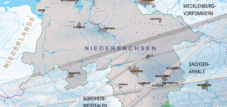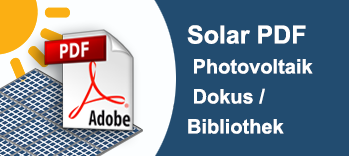The breakthrough: solar parks profitable without subsidies
Language selection 📢
Published on: August 20, 2020 / Update from: September 28, 2020 - Author: Konrad Wolfenstein
Many of the photovoltaic projects implemented in Germany to date are based on the fact that they were largely subsidized with tax money. But now a change is on the horizon, as advances in development make it possible for the technology to now be profitable even without government subsidies.
Several large solar parks in Bavaria are pioneers. These open-space systems now produce energy for around 5 cents per kilowatt hour and are therefore so cheap that they do not require any subsidies to be operated profitably.
Thanks to long-term supply contracts with electricity suppliers and significantly reduced production costs, they are able to waive the guaranteed feed-in tariff under the Renewable Energy Sources Act.
Thomas Banning, CEO of the operator Naturstrom AG , therefore already spoke of a “turn of the time for photovoltaics”. This was recognized by those responsible in Bavaria, because they approved an increase in the annual upper limit for new solar parks on agricultural areas from 70 to 200.
Due to Bavaria's successes in the EEG tenders, the state government increased the initial 30 projects to 70 projects in 2019. Since 2017, outdoor photovoltaic systems on arable and grassland areas in agriculturally disadvantaged areas have been able to take part in the Federal Network Agency's tenders under the Renewable Energy Act (EEG).
One example is the green electricity project in Rottenbach, Upper Franconia. Here, Naturstrom AG has brought its largest solar park to date, 13 MWp, online. The eco-energy supplier supplies part of the electricity generated directly to its own customers; the company implemented the corresponding part of the system without any entitlement to EEG remuneration. The project is therefore an example of the progress of the energy transition.
Almost 35,000 solar modules now generate climate-friendly green electricity with a total output of around 13 MWp. The open-space system, built on both sides of the A73 motorway, is the largest solar project to date among the over 300 eco-power plants. The 14.2 million kilowatt hours of solar power generated annually correspond to the annual consumption of almost 4,500 average three-person households.
However, not only the scope of the project, but also the marketing of the solar power generated in several parts is special: 3.2 MWP solar power was built here, which do not receive EEG remuneration and whose construction and operation are directly refinanced to their own customers. The eco-energy supplier integrates this sun current into its own procurement portfolio. “Photovoltaics in large parks has now become the cheapest form of electricity - not only around the equator, but also here in Germany. The initial investments of the energy transition have led to enormous costs for solar and wind energy. The further climate -friendly redesign of the energy supply is therefore not only offered for reasons of sustainability, but also the economically sensible variant ”. A further 9 MWP of the solar park were built from the highway after a surcharge in the EEG tenders in a corridor with a distance of 110 meters, so they receive a market premium remuneration depending on the stock market price. The eco-energy supplier had already built 0.7 MWP in a first construction phase in 2018, which received a fixed feed-in tariff via the EEG.
The Rottenbach solar park is exemplary with its market-based sales of solar power and delivery to its own customers.
According to Mr. Banning, the projects are now counting without EEG remuneration. “Since we can finally supply our customers directly from our own systems with green electricity and once again do pioneering work at the energy transition. As early as 2007, we were pioneers in the real direct delivery of green electricity from wind turbines to end customers, three years ago we began supplying customers from photovoltaic systems on the roof of the respective property, known as a tenant current. Now we are there with large newly re-established photovoltaic systems and from 2021 we will market electricity from wind turbines that no longer receive EEG remuneration. ”
Suitable for:


























